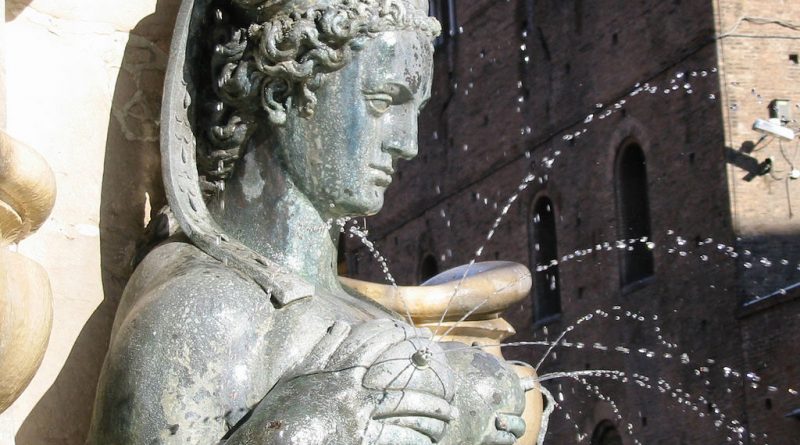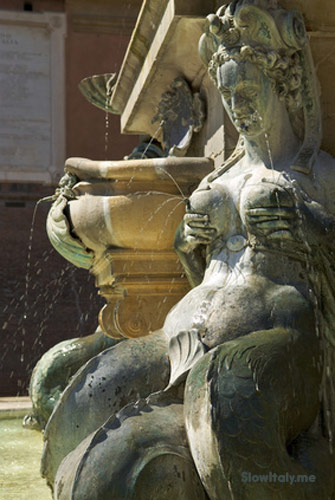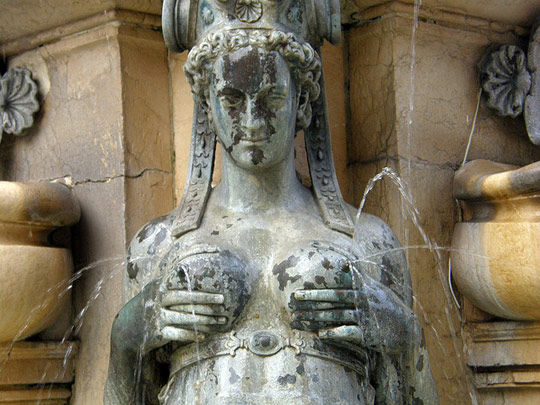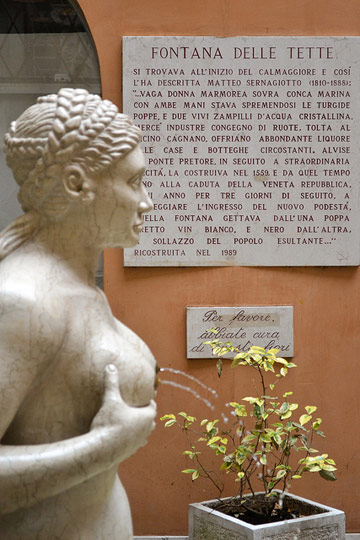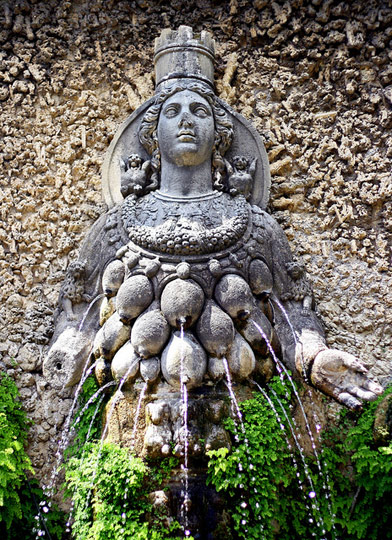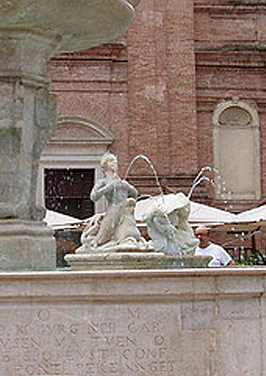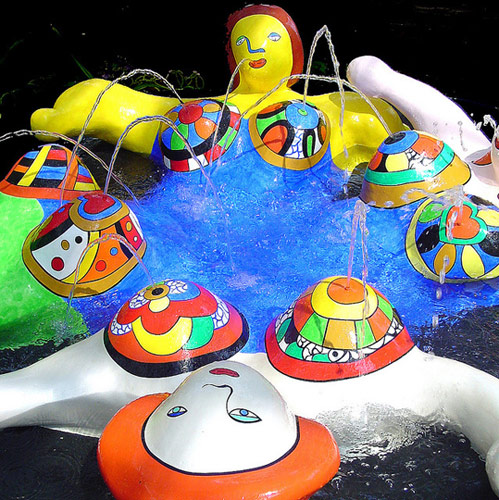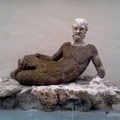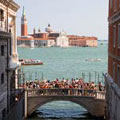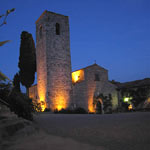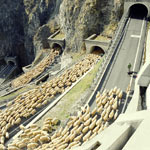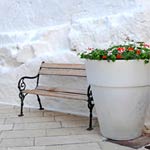Lactating fountains of Italy
Often considered a funny attraction, lactating nereids, sirens and godesses were in fact a manifestation of the high Mannerist style, popular in Italy in the 16th century. This visual tradition of representing Nature as a lactating woman or hyperbolically breasted women made these mythological characters popular icons for protection, regeneration and fertility. Some authors identify a long associative history between breast milk and wisdom in which the breast is figured as inexhaustible source.
1. Fountain of Neptune, Bologna
The Neptune Fountain is a monumental fountain located in Piazza Nettuno and one of Bologna’s most famous landmarks. Designed by the Sicilian artist Tommaso Laureti and executed by Giambologna in 1567, it is a typical example of Italian Mannerist style, popular with the courtly elite in the mid-sixteenth century. The famous lactating Nereid is situated at the foot of Neptune. A popular saying goes that Bologna is famous for its three ‘t’s: tortellini, torri (towers) and t..tte (breasts).
2. Fontana della Spinacorona, Naples
The Fontana della Spinacorona, commonly know as Fontana della Zizze, is situated outside the church of Santa Caterina della Spina Corona and is one of the symbols of Naples. It is a marble representation of the mythological founder of Naples, the winged siren Parthenope, eponymous of the original nucleus of the city founded by the Greeks in the 9-8th century BC.
Legend has it that the Siren pressed her breasts to direct her milk onto the flames of the volcano Vesuvius to extinguish the fire. The work bears the Latin inscription Dum Vesevi Syrena Incendia Mulcet (While the siren of Vesuvius calms the flames). The legend is based on a XIX century story telling Parthenope’s love affair with the Centaur Vesuvius. The love affair made Zeus so jealous that he transformed the centaur into a volcano and the siren into the city of Naples.
 Note that according to early tradition sirens were half bird and half woman, and only later became represented as half fish and half woman creatures.
Note that according to early tradition sirens were half bird and half woman, and only later became represented as half fish and half woman creatures.
3. Fontana delle Tette, Treviso
The Fontana delle Tette was created in 1559, at the time of the Republic of Venice, after a period of heavy drought. The Republic of Venice lasted for over a millennium, from the late 7th century until 1797, and it became a custom, at every change of reign, that for three days red wine would flow from one breast and white wine from the other. The town’s citizens could drink the wine for free for the entire three days.
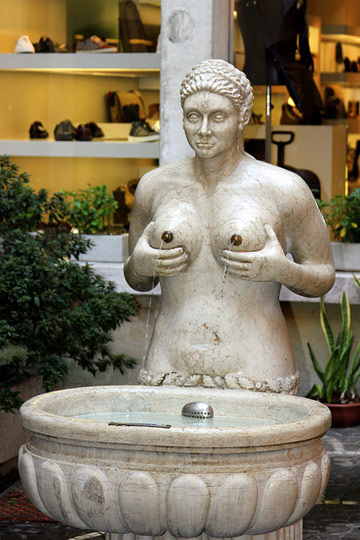
4. Fountain of Fertility, Villa d’Este, Tivoli
he fountain of Diana Efesina is a 16th-century many-breasted interpretation of Ephesian Artemis. Ephesian Artemis, the “great mother goddess”, was popular in the ancient world as the goddess of fertility. From the Greek point of view Ephesian Artemis was a distinctive form of their goddess Artemis. In Greek cult and myth, Artemis is the twin sister of Apollo, a virgin huntress, while Ephesian Artemis, the mother of all life, represents fertility. The spherical objects that cover the lower part of her chest, which are commonly assumed to be female breasts, are more probably gourds, known in ancient Asia as fertility symbols for centuries.
5. Amalfi fountain of breasts
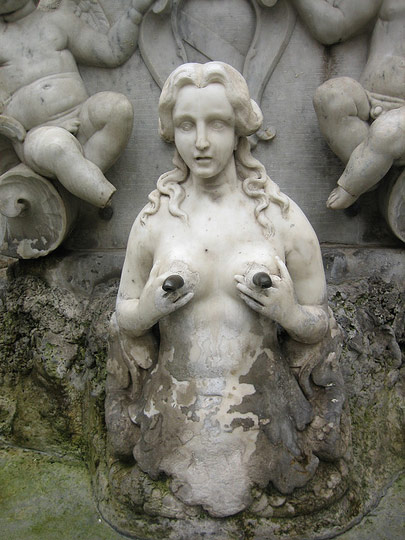 The amalfian Fountain of Breasts sits at the foot of the Fountain of Saint Andrew (Fontana Sant’Andrea), the patron Saint of the Amalfi coast and the protector of seaman, located at the bottom of the steps leading to the eponymous Cathedral.
The amalfian Fountain of Breasts sits at the foot of the Fountain of Saint Andrew (Fontana Sant’Andrea), the patron Saint of the Amalfi coast and the protector of seaman, located at the bottom of the steps leading to the eponymous Cathedral.
6. Fontana Ottagonale, Matelica (Marche)
Below a detail of the Fontana Ottagonale with the lactating statue, in Piazza Enrico Matei in Matelica (Marche)
7. The Fountain of Women at the Giardino dei Tarocchi (Tarot Garden) in Pescia Fiorentina, Tuscany
A sculpture created by Niki de Saint Phalle in the Tarot Garden in Pescia Fiorentina, località Garavicchio, province of Grosseto.
Photo credits (top to bottom): Matteo Fogli, © Giacomo Ciangottini/Fotolia.com, mararie, Frank Wouters, craggyisland21, smile for Raphaela, cianghetta, dee_gee, Ozchin, Lady Caos, StGrundy
You might also like:
Venetian bridges with the most unusual names

